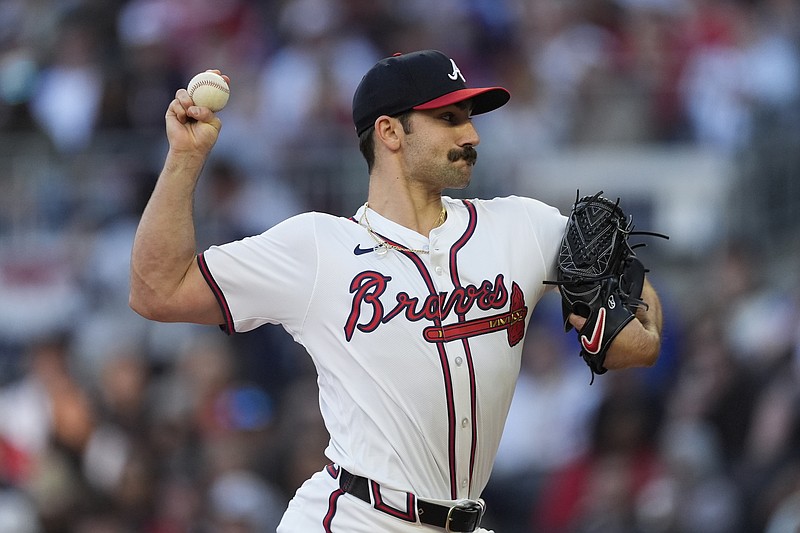Here are a trio of early observations on the Atlanta Braves — and a commentary on the biggest issue in Major League Baseball right now.
We could be watching a historically great offensive team
The MLB record for runs scored in the modern era is 1,067 by the 1931 New York Yankees, and the 1999 Cleveland Indians were the most recent team to eclipse 1,000. Sure, it's way, way early, but the Braves are on pace to produce more than 1,110 runs this season — and there are several reasons they could keep up their current pace of nearly seven runs per game.
Of the team's main nine batters, only red-hot Marcell Ozuna is having a start that's not sustainable (OK, newcomer Jarred Kelenic is hitting .462, but he hasn't produced many runs). Reigning National League MVP Ronald Acuña Jr. is off to a tepid start, hitting .233 through 11 games. His only two extra-base hits are doubles, giving him a pitcher-like .279 slugging percentage.
When Acuña does put it in gear, considering the danger for opposing pitching that lurks behind him with Ozzie Albies, Austin Riley, Matt Olson and Ozuna, watch out.
The other factor is the state of pitching in the bigs right now, with injuries and lack of rotation depth throughout the majors forcing teams to fill roster spots with pitchers who either aren't ready or just not good enough to pitch at this level. The Braves should continue to feast.
We could also be watching a team that NEEDS to score a lot
The likely season-ending injury to right-hander Spencer Strider (more on that later) and the early struggles of left-hander Max Fried are a worst-case scenario for the Braves. Newcomers Chris Sale and Reynaldo Lopez have been terrific on the mound, with veteran Charlie Morton showing some good and some bad.
Allan Winans, getting the first shot at replacing Strider, did not allay any fears Thursday afternoon by getting bombed by the Mets, who wound up beating the Braves 16-4. There is no obvious fix to the rotation as most teams are in the same boat, though the Braves at least have several pitchers in the minors who have big league starting experience.
Probably the best course of action would be to piece together the rotation with those guys until after the MLB All-Star break and then see what's available via trade for the postseason run. The problems there, though, are a lack of trade bait and the fact it will be very costly to do business for pitchers.
The pen lacks punch
Again, short sample size, but the bullpen seems to again be filled with pitch-to-contact members. That's not necessarily a horrible thing — outs are outs, for the most part — but there are always times in close games where a strikeout is needed.
Entering Thursday, the Braves had 34 strikeouts in 40 innings pitched by the bullpen. Again, not awful, but not intimidating either. Currently, only A.J. Minter and Pierce Johnson have more strikeouts than innings pitched (Johnson also has a 6.35 ERA).
Closer Raisel Iglesias has two punchouts in four innings, with five hits allowed. Maybe Minter is headed for a more prominent role.
There is no easy cure to the pitching pandemic
While MLB leadership and the players' union waste everybody's time by debating the pitch clock's effect on elbows and shoulders, pitchers are still hitting the injured list at record pace.
Arm injuries are, unfortunately, here to stay, and it's not like they haven't been consistent over the past two decades at least. Is there a scientific cause? Are pitchers building too much muscle, causing more strain on ligaments and tendons?
No doubt. Quick question: When was the last time we saw, let's call them, "husky" pitchers have a rash of arm injuries? I've known several successful baseball coaches who preferred their pitchers to be not so lean.
The bigger issue, however, is overuse at younger ages. Anyone who covers high school sports or has had a child go through the travel ball scene over the past 20 years has seen it. Kids throwing 100 pitches in a game. Kids below the high school level throwing curveballs.
High school and college coaches seeking team and personal glory pushing the limit too often. Parents sending their kids to multiple "developmental" camps and prospect showcase events.
It's a chicken-and-egg thing, though. How do you become a talented pitcher if you don't pitch? Pitchers aren't born, they're developed, but before they fully develop physically, they need to pitch, at most, once a week.
Let kids play multiple sports and build their bodies up naturally. Baseball does not have to be a year-round thing, but it too often is. Kids begin practice now in January for prep seasons, end often in June and go right into summer and fall travel ball.
For young pitchers, it makes no sense and is a certain recipe to join the Tommy John surgery club. Maybe more than once.
Contact Lindsey Young at lyoung@timesfreepress.com.
